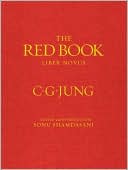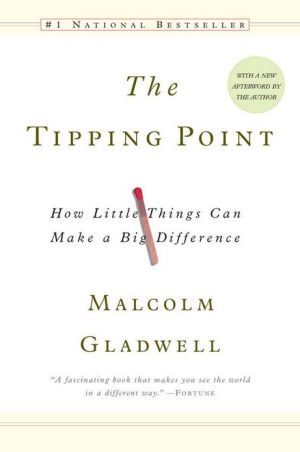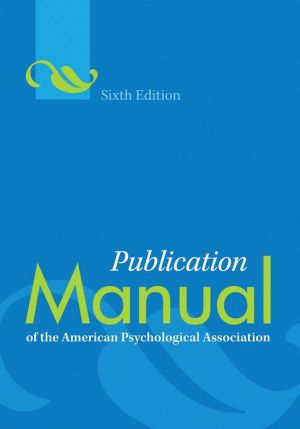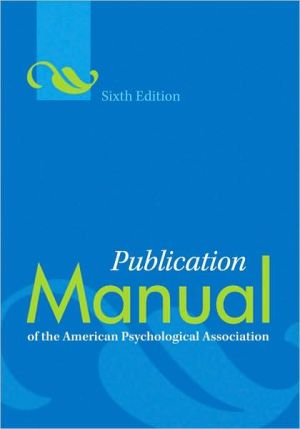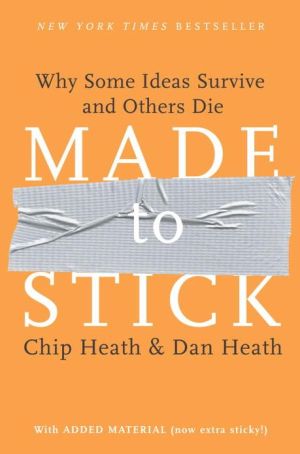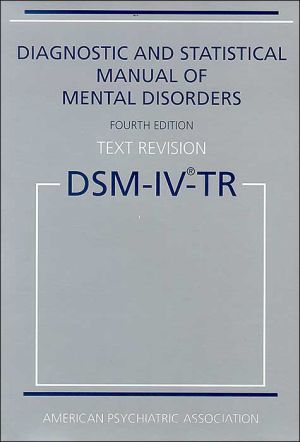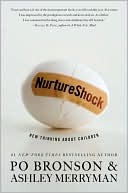Handbook of Attachment: Theory, Research, and Clinical Applications
This comprehensive Handbook provides a landmark review and synthesis of the current state of knowledge about attachment and loss in children and adults. Bringing researchers, clinicians, and students up to date on one of the leading theoretical perspectives in contemporary psychology, preeminent authorities in the field cover the origins and development of attachment theory, biological perspectives, measurement of attachment across the lifespan, clinical applications, and emerging topics and...
Search in google:
From foremost authorities, this comprehensive work is widely recognized as the standard reference on attachment. Coverage includes the origins and development of attachment theory; biological and evolutionary perspectives; the role of attachment processes in personality, relationships, and mental health; and clinical applications with children, adults, couples, and families. Broad in scope, the volume is designed to help clinicians, students, and researchers become fully informed about one of the most important areas of research in contemporary psychology. Doody Review Services Reviewer:Gary B Kaniuk, Psy.D.(Cermak Health Services)Description:This comprehensive handbook on attachment builds upon the landmark work of John Bowlby and Mary Ainsworth, integrating theory and research with clinical practice. This updates the first edition of 1999.Purpose:According to the editors, "in order to make optimal use of the theory as a researcher, clinician, or teacher, one has to know what Bowlby and Ainsworth originally said; what subsequent research has revealed; which measures of attachment have been developed as well as what they actually measure; and what recent theoretical and empirical developments contribute to the overall 'story' of attachment relationships and personality development. The purpose of the present volume is to satisfy these important professional needs.Audience:Graduate students in developmental, social, and clinical psychology are the intended audience. Dr. Cassidy, professor of psychology at the University of Maryland, conducts research on attachment, social, and emotional development in children and adolescents and is co-editor of the journal Attachment and Human Development. Dr. Shaver, distinguished professor of psychology at the University of California Davis, conducts research on attachment, human motivation, and emotion and is president of the International Association for Relationship Research. The contributors represent international authorship from the United States, United Kingdom, Germany, Sweden, Netherlands, and Israel. Features:An introduction to attachment theory begins the book. Next, evolutionary and psychological origins are addressed. The book spends considerable time discussing attachment behavior across the lifespan. Clinical applications are included, especially involving the relationship between attachment and psychopathology. The book ends with special areas where attachment plays an important factor, including cross-cultural applications, religion, divorce, and child care policies. Among the particularly interesting topics is the discussion of Bowlby's views and current controversies (chapter 3) on disordered mourning, detachment, and resolution. The chapter on attachment in middle and later life (chapter 24) discusses whether distributions of attachment styles found in children are replicated in older adults. The chapter on attachment and religion (chapter 38) is fascinating reading about how people maintain proximity to God. There is both a subject and author index. The book could have benefited from more tables and figures to add clarity, especially since so much research is presented.Assessment:This excellent book is a comprehensive look at the classic theory of attachment. It masterfully weaves theory and research with clinical practice. If you want to know about attachment, this is the book to have, though you should probably read Bowlby's Attachment and Loss series first, since it is the foundation for this book. This new edition is certainly justified. It has been almost 10 years since the publication of the previous edition of this book and the field has advanced, especially in the area of neuroscience and behavioral genetics. New chapters have been added and others have been revised to reflect current research findings.
Pt. I Overview of Attachment TheoryPt. II Biological PerspectivesPt. III Attachment in Infancy and ChildhoodPt. IV Attachment in Adolescence and AdulthoodPt. V Psychopathology and Clinical Applications of Attachment Theory and ResearchPt. VI Systems, Culture, and ContextAuthor IndexSubject Index
\ From The CriticsReviewer: Gary B Kaniuk, Psy.D.(Cermak Health Services)\ Description: This comprehensive handbook on attachment builds upon the landmark work of John Bowlby and Mary Ainsworth, integrating theory and research with clinical practice. This updates the first edition of 1999.\ Purpose: According to the editors, "in order to make optimal use of the theory as a researcher, clinician, or teacher, one has to know what Bowlby and Ainsworth originally said; what subsequent research has revealed; which measures of attachment have been developed as well as what they actually measure; and what recent theoretical and empirical developments contribute to the overall 'story' of attachment relationships and personality development. The purpose of the present volume is to satisfy these important professional needs."\ Audience: Graduate students in developmental, social, and clinical psychology are the intended audience. Dr. Cassidy, professor of psychology at the University of Maryland, conducts research on attachment, social, and emotional development in children and adolescents and is co-editor of the journal Attachment and Human Development. Dr. Shaver, distinguished professor of psychology at the University of California Davis, conducts research on attachment, human motivation, and emotion and is president of the International Association for Relationship Research. The contributors represent international authorship from the United States, United Kingdom, Germany, Sweden, Netherlands, and Israel. \ Features: An introduction to attachment theory begins the book. Next, evolutionary and psychological origins are addressed. The book spends considerable time discussing attachment behavior across the lifespan. Clinical applications are included, especially involving the relationship between attachment and psychopathology. The book ends with special areas where attachment plays an important factor, including cross-cultural applications, religion, divorce, and child care policies. Among the particularly interesting topics is the discussion of Bowlby's views and current controversies (chapter 3) on disordered mourning, detachment, and resolution. The chapter on attachment in middle and later life (chapter 24) discusses whether distributions of attachment styles found in children are replicated in older adults. The chapter on attachment and religion (chapter 38) is fascinating reading about how people maintain proximity to God. There is both a subject and author index. The book could have benefited from more tables and figures to add clarity, especially since so much research is presented.\ Assessment: This excellent book is a comprehensive look at the classic theory of attachment. It masterfully weaves theory and research with clinical practice. If you want to know about attachment, this is the book to have, though you should probably read Bowlby's Attachment and Loss series first, since it is the foundation for this book. This new edition is certainly justified. It has been almost 10 years since the publication of the previous edition of this book and the field has advanced, especially in the area of neuroscience and behavioral genetics. New chapters have been added and others have been revised to reflect current research findings.\ \ \ \ \ Journal of the Canadian Academy of Child and Adolescent Psychiatry"The authors, Jude Cassidy and Philip Shaver, are well known figures in the attachment field. They have accomplished an unbelievable intellectual feat on these pages by balancing the most recent neurobiological advances in attachment research and preserving the foundational elements of attachment theory derived from psychoanalysis, ethology, and developmental psychology....This book belongs in departmental libraries and retains its position as an authoritative volume on attachment theory including research and clinical applications."--Journal of the Canadian Academy of Child and Adolescent Psychiatry\ \ \ \ Behavior Therapist"An essential reference for researchers who focus on attachment, but it also has tremendous relevance for clinicians who are interested in the biological, cognitive, and emotional underpinnings of interpersonal relationships, psychopathology, the process of therapy with different clients, and therapeutic change....The chapter authors are all experts, and many are leading researchers in the areas they review....Cuts across disciplines to discuss a wide range of issues relevant to clinicians, and as the title indicates, attempts to pull out the clinical applications in each area....Very interesting reading for clinicians and researchers who wish to understand theory and empirical research relevant to client conceptualization and treatment."--Behavior Therapist\ \ \ \ \ From the Publisher"The growth of attachment theory and research continues apace. The first edition of the Handbook of Attachment was a great help for scholarship and teaching. With this second edition, it has become indispensable. Show me a similar volume in any other field that so artfully integrates work on behavior, cognition, and emotion across such a wide range of ages and contexts! This is exactly what John Bowlby and Mary Ainsworth hoped to set in train."—Everett Waters, PhD, Department of Psychology, Stony Brook University\ \ "This revised, thoroughly up-to-date volume documents the vibrancy and extraordinary breadth of attachment theory. No other theory has such an extensive conceptual span—from biology and lifespan development to emotion, relationships, psychopathology, and interventions. This volume is a 'must read' for graduate students and scholars who want to keep up with attachment theory's explosive run through the human sciences."—Harry Reis, PhD, Department of Clinical and Social Sciences in Psychology, University of Rochester\ \ "Destined to become a classic reference work in the field. All chapters are completely updated, and important new topics have been added that make this an even more compelling volume than its predecessor. This book belongs in the library of professionals and graduate students in developmental and clinical psychology, pediatrics, and psychiatry."—Dante Cicchetti, PhD, McKnight Presidential Chair and Professor, Institute of Child Development and Department of Psychiatry, University of Minnesota\ \ "From its first appearance, the Handbook defied superlatives and instantly established itself as the attachment 'bible,' which no self-respecting child development researcher, couple counselor, or progressive psychotherapist could afford to be without. This new edition surpasses even its predecessor, with stellar contributors combining cutting-edge research findings and penetrating clinical observation. The ever-expanding field of attachment is here comprehensively charted and monitored with awe-inspiring elegance and concision."—Jeremy Holmes, MD, FRCPsych, Professor of Psychological Therapies, University of Exeter, UK\ \ \ \ \ \ EABP Newsletter"Serves as a readable guide with an abundance of information essential to anyone studying attachment, whether it be to a first time student or a seasoned scholar in the field."--EABP Newsletter\ \ \ \ \ BooknewsOffers a broad view of attachment theory to professionals who generally encounter and understand it only in the context of one of the many fields it has permeated. Assembles such information as what the founders of the approach had to say originally, what subsequent research has revealed, what measures have been developed and what they actually measure, and what recent theoretical and empirical developed contribute to the overall story of attachment relationships and personality development. Also suitable as a core text for a course devoted to attachment theory and research. Annotation c. Book News, Inc., Portland, OR (booknews.com)\ \

